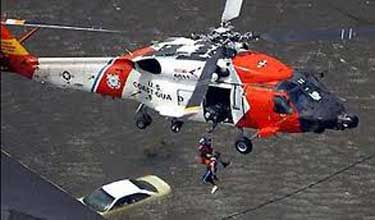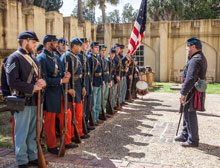 I like this straightforward definition of “rescue”: responsive operations that usually involve the saving of life, or prevention of injury during an incident or dangerous situation. For anyone who has ever been rescued, it is a precious gift.
I like this straightforward definition of “rescue”: responsive operations that usually involve the saving of life, or prevention of injury during an incident or dangerous situation. For anyone who has ever been rescued, it is a precious gift.
Like many people, I know this first hand. Many years ago, I misguidedly accepted a badly mismatched job offer from a management consulting firm in Philadelphia. Adding to the stress of discovering this problem, I realized through an overheard phone call—right through the wall– that the sinister looking fellow in the adjacent apartment was a hit man, actively plotting his next murder. I remember my anxiety and apprehension. Thankfully, my future wife Jane came to the rescue and helped expedite my escape back to Connecticut.
Taking an aerial view, America is good at managing rescues of nearly all sorts. Usually. Kind friends of mine are looking to adopt a dog (she or he will hit the jackpot) and animal rescues occur regularly around the country. Nationwide, there are at least 3,500 animal shelters and though far too many animals are eventually euthanized, 30% of the roughly 160 million owned dogs and cats in the U.S. are adopted from shelters. That’s upwards of 48 million rescues if online sources are accurate.
World War II was a rescue hotbed. Thousands of downed pilots and sailors, for example, forced to abandon ship or blown overboard were fished from the sea, often by nearby destroyers or float planes. Many dramatic efforts by rescue teams are well documented. Mitchell Zuckoff teaches journalism at Boston University and specializes in WWII backstories involving extraordinary rescue efforts.
Zuckoff’s Frozen in Time (Harper, 2013) transports us to 1942 Greenland (a cruel joke of a name for a country), an intemperate wasteland whose primary value then lay in a mineral mine critical to the manufacture of desperately needed aluminum. He walks us carefully through a series of plane crashes and rescues under comparatively primitive conditions. The heroics of our Army Air Force and Coast Guard crews were over the top; their obsessive dedication to getting every possible man out off the ice alive is breathtaking. It is noteworthy that almost impossibly strong and devoted dogsled teams played an important role in the extraordinarily hostile cold, wind, snow and ice. Cold severe enough to freeze oil lines and cause instant frostbite.
Fast forward to 1945, late in the war, in a tropical get-me-out-of-here place, New Guinea. Zuckoff’s Lost in Shangri-La: A True Story of Survival, Adventure, and the Most Incredible Rescue Mission of World War II (Harper, 2011) works hard to live up to its title. This time he transports us into inhospitable mountains and jungles. A festering cauldron of sweltering heat, insects, rivers, downpours and bacteria. We are taken along on an intended morale-boosting/sightseeing trip. The protagonists are the U.S. Army Air Force, including a group of WAC’s (Women’s Army Corps). A poorly executed flight crashed into a mountain near the sought-after hidden valley. Twenty one out of 24 on board were killed in the crash. Two of the three survivors were severely injured, all three scared. Aside from some hard candy, they had no food, fresh water, supplies, medicine or even a map. They are 150 miles from base amidst primitive natives who practiced cannibalism.
One is struck by the fierce survival and rescue motivations of a wide cast of characters, including a brilliant group of Filipino paratroopers. Their leader is a self-salvaged young Army officer who is impossible to forget – C. Earl Walter, Jr., straight out of central casting. Tall, athletic, quick thinking, handsome and charismatic (not to mention articulate and focused enough to keep a running diary of the rescue mission). Readers are able to cheer simultaneously for the base command structure coordinating the rescue, Captain Walter’s team, and the survivors. All of them go far beyond the call of duty and between them earn a well-deserved cache of medals and citations.
As diligently as these rescues proceeded, some efforts have been abject disasters. James Scott’s The Attack on the Liberty: The Untold Story of Israel’s Deadly 1967 Assault on a U.S. Spy Ship (Simon & Schuster, 2009) chronicles one such tragedy. This marvelously researched and written book simultaneously enthralls and horrifies. The timeline reveals that between the first general distress call that went out from the strafed and torpedoed U.S. Navy spy ship Liberty, only nominally armed and sailing legally in international waters, and a Navy medical team arriving on scene was an unforgivable 17 hours.
Compared to Zuckoff’s stories, Scott’s unfolds in relatively modern times, in fine June weather off the Egyptian coast during broad daylight. If the Liberty’s distress calls after being repeatedly attacked by the Israelis was the equivalent of a 911, there were no excuses for the delays, not to mention the interminable public relations and political fog that prevented the public from being properly informed and the perpetrators held to account.
I finished Mr. Scott’s captivating book with a brick in my stomach. I was hoping for a better settlement for the ship’s crew and their families, and/or a clear admission of guilt and criminal wrongdoing. The Liberty sailed into the perfect geopolitical storm and suffered miserably and needlessly. Israel’s denials and obfuscation were unforgivable. On our side, the Secretary of Defense’s office along with other DC politicians and bureaucrats conspired to minimize if not bury the disaster. The aftermath of the attack thus exacerbated the casualties: 34 of the crew killed and nearly 200 wounded. One crucial lesson we learn is that no rescue can ever be taken for granted.
In today’s world, we are exposed regularly to successful rescue operations. One of the most impressive tools in the rescue toolkit is the MH-60 Jayhawk helicopter. Jayhawks are specially designed for search and recovery operations and trace their roots to the Army’s workhorse, the H-60 Blackhawk. As rescue craft go, they are incredible and put to great use by the U.S. Coast Guard. With a cruising speed of 140 knots, a range of 300 nautical miles, two GE engines rated at 1980 horsepower and even more advanced avionics in the enhanced MH-60T model, Jayhawks are muscular, fast, smart and reliable.
Imagine your sailboat or fishing boat is overpowered by storm and sinking. No other ships are in the area and the water is cold enough to incapacitate within 90 minutes. Or imagine your car is enveloped by floodwaters, your children terrified and screaming helplessly in the back seat. The reassuring sight and sound of a hovering Jayhawk, expertly crewed, able to hoist up to six people on board and remain on-scene up to 45 minutes, is enough to raise spirits along with the bodies. The ultimate adrenaline rush.
In my fanciful moments – the kind when magic wands and time machines come to mind – I’d like to summon a fleet of Jayhawks to the Liberty’s immediate rescue. And wouldn’t it be great if all animals in shelters were quickly placed in caring homes. Closer to reality, don’t we all have a mission in life to help in whatever rescues we can? Can there be any better use of our time or greater measure of our humanity?








